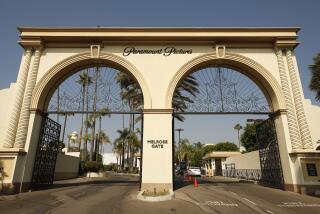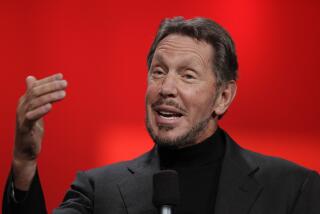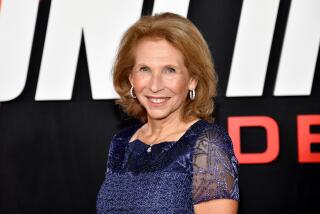Chain of Art Galleries Plans to Sell Stock
- Share via
Martin Lawrence Limited Editions, a thriving Van Nuys operator of a chain of art galleries, plans to sell an additional 1.3 million common shares of stock to the public. Several Martin Lawrence executives are using the sale to cash in about $3.2 million worth of their stock.
The company’s stock closed Monday at $10.75 a share in national over-the-counter trading. At that price, the offering would raise $14 million--before underwriting commissions and other costs--for Martin Lawrence. The actual price will be set by Martin Lawrence’s underwriter, PaineWebber, based on market conditions when the sale actually occurs.
Four Martin Lawrence executives, including founder and chairman Martin S. Blinder, plan to sell a combined 300,000 additional shares in the offering, according to a filing that Martin Lawrence made with the Securities and Exchange Commission last week.
Blinder plans to sell 75,000 shares that, at Monday’s price, would provide him with $806,250. Jack A. Rounick, a vice president and director, is offering 125,000 shares ($1.34 million), and Allen A. Baron and Barry R. Levine, chief financial officer and vice president, respectively, plan to sell 50,000 shares ($537,500) each.
Despite their sales, the executives collectively will own 24.3% of the 7.94 million Martin Lawrence shares expected to be outstanding after the offering. That’s still a sizable stake for management as a defense against any possible takeover threat.
2 Reasons for Sale
Baron said the company is selling the additional stock for two reasons: It wants to buy more expensive art for resale (works costing $25,000 and up), and it wants to continue its aggressive expansion. Martin Lawrence, which runs 27 galleries, plans to open another 14 to 18 outlets by mid-1990.
“There’s a tremendous demand for expensive works of art,” Baron said, noting that most of the art sold by Martin Lawrence’s galleries sells for between $500 and $10,000.
Martin Lawrence has grown sharply in the past two years. In 1988, the company’s profit nearly doubled to $5.8 million, and sales jumped 50% to $34.8 million. Two years earlier, its sales were only $10.2 million.
The company wants to sell more stock now because “we felt it’s certainly a good time to go to the marketplace,” Baron said. The stock is near its 52-week high of $12.50 a share, and “very few offerings are available right now” from other companies, he said.
If things are so rosy, why are the executives selling some stock? Baron said it was “to diversify” their personal investment portfolios and because the company wanted “to get a wider distribution of our stock without the company issuing additional shares.”
More to Read
The biggest entertainment stories
Get our big stories about Hollywood, film, television, music, arts, culture and more right in your inbox as soon as they publish.
You may occasionally receive promotional content from the Los Angeles Times.











